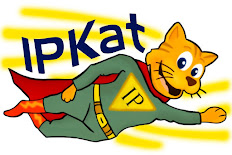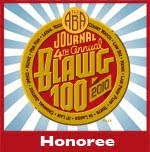In short, in 9 September 2003 PepsiCo filed an application to register as a Community design the curious shape on the right.for ‘promotional item[s] for games’. This application claimed priority from a Spanish design application, filed on 23 July 2003 and published on 16 November 2003. OHIM registered by OHIM under number 74463‑0001 for the following goods: ‘promotional item[s] for games’. It is represented as follows: A Community design was subsequently registered.
As luck would have it, in February 2004 a Spanish company, Grupo Promer, applied for a declaration of invalidity, citing its own earlier registered Community design which enjoyed a filing date of 17 July 2003 -- six full days earlier than Pepsico's claimed priority. This Community design in turn claimed priority from an earlier Spanish registration and it is represented by the illustration on the left. Grupo Promer argued that PepsiCo's later design lacked novelty and individual character under Article 25(1)(b) of the Community Design Regulation (Regulation 6/2002) on account of the existence of its prior right under Article 25(1)(d) of the same Regulation.
 |
| A handful of pogs |
This time it was Grupo Promer's turn to appeal, which it did with some success before the General Court. That august tribunal annulled the Board's findings, holding that the differences between the designs at issue were insufficient to produce a different overall impression on the informed user. Now there was nothing fot it but for PepsiCo to appeal to the European Union's top tribunal, the Court of Justice, and ask it either to set aside the General Court's decision or to send the case back to that court for further consideration.
Last Thursday the Court of Justice decided, dismissing the appeal, that the General Court had got it right.
PepsiCo first objected essentially that the General Court agreed that the central circular shape, the raised edge and the similar dimensions of the respective pog designs were not the result of a constraint on the designer’s freedom, an error that led the court to assess incorrectly the overall impression produced by each of the designs in conflict. This was always going to fail: the Court of Justice deals with appeals on legal grounds only doesn't interfere with the General Court's findings of fact unless they're so distorted that they must have constituted some sort of collective aberration on the part of judges. That was not the case here.
 |
| Pepsipogs |
What about the informed user's attention level? The Court of Justice agreed that the informed user was not the well-informed and reasonably observant and circumspect average consumer who normally perceives a design as a whole and does not proceed to analyse its various details. Nor is he an expert or specialist capable of observing in detail the minimal differences that may exist between the two designs. Further,
"... the qualifier ‘informed’ suggests that, without being a designer or a technical expert, the user knows the various designs which exist in the sector concerned, possesses a certain degree of knowledge with regard to the features which those designs normally include, and, as a result of his interest in the products concerned, shows a relatively high degree of attention when he uses them".Bearing this in mind, the General Court had not erred in its finding.
The IPKat notes that the decision appears to be well received by the design community in Europe. It contains no surprises, except for Merpel who cannot conceive how a system that takes the best part of a decade from start to finish when determining whether a pog design is entitled to Community design protection can serve the best interests of the innovative and creative industries which, we are told with increasing frequency, depend upon design protection in order to encourage and protect investment in a cruel world of copyists.
More on pogs here
Tazos here; tasers here
 Reviewed by Jeremy
on
Monday, October 24, 2011
Rating:
Reviewed by Jeremy
on
Monday, October 24, 2011
Rating:





![[Guest post] Can AI be considered a PHOSITA? Policy debates in the US and the EU](https://blogger.googleusercontent.com/img/b/R29vZ2xl/AVvXsEggxDO6mW5r4n3-06Af5ckmIaMIhzgPJBoDP8AUsSYXY2zajUQt1ObGVn_GhCgidbG_YDVnybQuJ5XoAjjBG9Ws2xJWDQHNPMrLkn526SWIG371X_Kjt1E8tJmn8Ae_20Phyphenhyphen09JeuUOhhTR3aZE9lMRQlqHGQGcAWGxlo91rrKcLk0AfUjWCvw6RQ/s72-c/Two-cats-eating.jpg)












Neither shape is curious, it is determined by the technical requirement that you do not want your bottle to leak. I cannot understand how a design registration can be obtained under those circumstances. It is distincly a "must fit" situation.
ReplyDeleteGeorge Brock-Nannestad
@George: Pogs are not bottle tops.
ReplyDeleteI like this judgment for the line up of our legal fictional friends in IP:- from Trade Mark's average consumer to Patent's person skilled in the art (the sectoral expert) with the Design's informed user lying in between these two. I wonder what these three characters might be discussing?
ReplyDelete